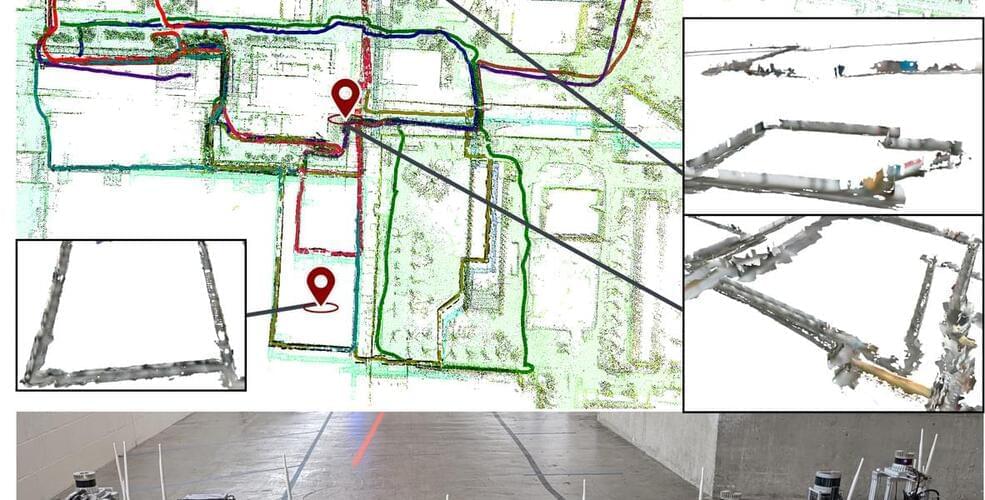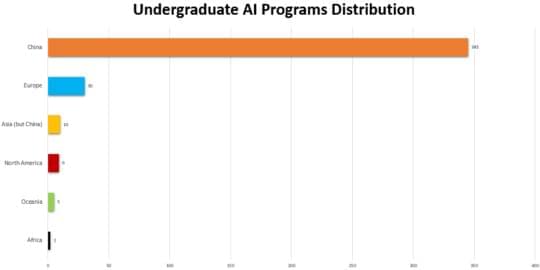Published 2 hours ago.



Over Take Us, AI Friends!
WASHINGTON − President Joe Biden on Thursday amplified fears of scientists who say artificial intelligence could “overtake human thinking” in his most direct warning to date on growing concerns about the rise of AI.
Biden brought up AI during a commencement address to graduates of the Air Force Academy in Colorado Springs, Colo. while discussing the rapid transformation of technology that he said could “change the character” of future conflicts.
“It’s not going to be easy decisions, guys,” Biden said. “I met in the Oval Office with eight leading scientists in the area of AI. Some are very worried that AI can actually overtake human thinking and planning. So we’ve got a lot to deal with. An incredible opportunity, but a lot do deal with.”

This article is part of our exclusive IEEE Journal Watch series in partnership with IEEE Xplore.
Does your robot know where it is right now? Does it? Are you sure? And what about all of its robot friends—do they know where they are too? This is important. So important, in fact, that some would say that multirobot simultaneous localization and mapping (SLAM) is a crucial capability to obtain timely situational awareness over large areas. Those some would be a group of MIT roboticists who just won the IEEE Transactions on Robotics Best Paper Award for 2022, presented at this year’s IEEE International Conference on Robotics and Automation (ICRA 2023), in London. Congratulations!
Out of more than 200 papers published in Transactions on Robotics last year, reviewers and editors voted to present the 2022 IEEE Transactions on Robotics King-Sun Fu Memorial Best Paper Award to Yulun Tian, Yun Chang, Fernando Herrera Arias, Carlos Nieto-Granda, Jonathan P. How, and Luca Carlone from MIT for their paper Kimera-Multi: Robust, Distributed, Dense Metric-Semantic SLAM for Multi-Robot Systems.
NASA recently made an extraordinary discovery of a large thermonuclear explosion in space, caused by a pulsar, which is the remains of a star that did not explode to form a black hole. The National Aeronautics and Space Administration was able to detect the explosion thanks to the strong beam of X-rays sent out by the burst, which was picked up by the agency’s orbiting observatory NICER.
This discovery serves as a potent reminder of the dangers that lurk in space. According to a study published in The Astrophysical Journal Letters in August, the burst released as much energy as the sun does in ten days in just twenty seconds.
The leader of the study and astrophysicist, Peter Bult, said in a statement from NASA, “This burst was great.” Bult also added that the study revealed a two-step change in brightness that they believe was caused by the ejection of separate layers from the pulsar’s surface. These features provide significant information to understand how these events work.

Overcoming AI Technophobia
Currently, there is a public surge of interest in AI topics, especially in Large Language Models, like ChatGPT. This is not a random development.
AI is here to stay and will have huge social and economic implications, seen as both a blessing and a curse. In view of its potential dangers, many AI scientists have expressed concern over AI developments that border on technophobia. But there is a means of defending ourselves from the dark side of AI as expressed in dystopian science fiction.

Discussion on AI, GPT-4 and the Open Letter”. We discuss and debate 4 areas of concern: Spectrum of Cultural Concepts of AI and GPT-4; Logic of Assertion that Large language models resulting in AGI; Plausibility of AI-Foom vs. Soft take-off; and Practicality of the “AI-pause”.

A 176-qubit quantum computing platform named Zuchongzhi went online for global users Wednesday night, which is expected to push forward the development of quantum computing hardware and its ecosystem, according to the Center for Excellence in Quantum Information and Quantum Physics under the Chinese Academy of Sciences.
Zhu Xiaobo, chief engineer of the project and professor at the University of Science and Technology of China, said that the research team improved the 66-qubit chip of Zuchonghi-2 by adding control interfaces of 110 coupled qubits, allowing users to manipulate 176 quantum bits.
Zuchongzhi 2 is a 66-qubit programmable quantum computing system made in 2021, which can perform large-scale random quantum circuits sampling about 10 million times faster than the fastest supercomputer at that time.

As it contends with a slowdown in 737 Max deliveries at present, Boeing also has its eye on the future.
According to reports this week, the aerospace powerhouse is now the sole owner of Wisk Aero, the self-flying air taxi manufacturer it has been backing since 2019, alongside Google co-founder Larry Page’s Kitty Hawk Corp. Kitty Hawk ceased operations last year but continued to invest in the electric vertical takeoff and landing (eVTOL) aircraft developer.
Now, Boeing has reportedly acquired Kitty Hawk’s shares in Wisk, making it a wholly owned subsidiary, though Wisk CEO Brian Yutko said the air taxi enterprise will retain its independence. Yutko did not disclose the terms of the agreement.
EV Safe Charge.
Ziggy, the portable robotic EV charger that Interesting Engineering reported on last year, will soon be installed at a U.S. airport in a bid to meet the growing demand for travelers owning EVs – so they can easily charge them while they fly.